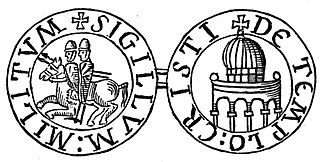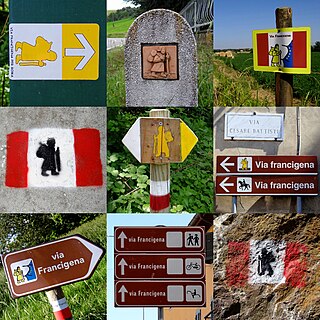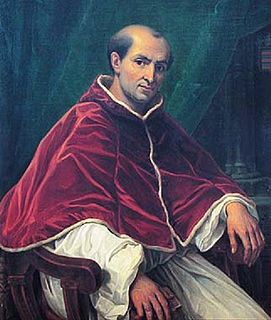
Montalcino is a hill town and comune in the province of Siena, Tuscany, central Italy. It is known for its Brunello di Montalcino wine.

San Gimignano is a small walled medieval hill town in the province of Siena, Tuscany, north-central Italy. Known as the Town of Fine Towers, San Gimignano is famous for its medieval architecture, unique in the preservation of about a dozen of its tower houses, which, with its hilltop setting and encircling walls, form "an unforgettable skyline". Within the walls, the well-preserved buildings include notable examples of both Romanesque and Gothic architecture, with outstanding examples of secular buildings as well as churches. The Palazzo Comunale, the Collegiate Church and Church of Sant' Agostino contain frescos, including cycles dating from the 14th and 15th centuries. The "Historic Centre of San Gimignano" is a UNESCO World Heritage Site. The town also is known for saffron, the Golden Ham, and its white wine, Vernaccia di San Gimignano, produced from the ancient variety of Vernaccia grape which is grown on the sandstone hillsides of the area.
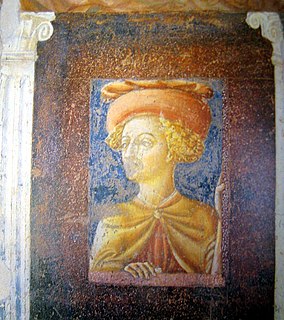
Lorenzo di Pietro, known as Vecchietta, was an Italian Sienese School painter, sculptor, goldsmith and architect of the Renaissance. He is among the artists profiled in Vasari's Le Vite delle più eccellenti pittori, scultori, ed architettori.

Monteriggioni is a comune in the province of Siena in the Italian region of Tuscany. It borders on the communes of Casole d'Elsa, Castellina in Chianti, Castelnuovo Berardenga, Colle di Val d'Elsa, Poggibonsi, Siena and Sovicille. The town is architecturally and culturally significant; it hosts several piazzas, and is referenced in Dante Alighieri's Divine Comedy.
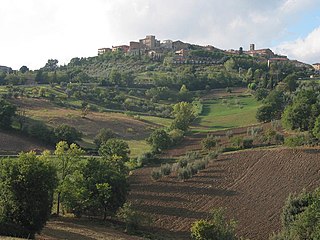
Casole d'Elsa [ˈkaːzole] is a comune (municipality) in the Province of Siena in the Italian region Tuscany, located about 50 kilometres (31 mi) southwest of Florence and about 25 kilometres (16 mi) west of Siena.

Castellina in Chianti is a comune (municipality) of c. 2,800 inhabitants in the province of Siena, in the Italian region Tuscany, located about 35 kilometres (22 mi) south of Florence and about 15 kilometres (9 mi) northwest of Siena. It is part of the Chianti Hills, between the valleys of the Arbia, Pesa and Elsa rivers.
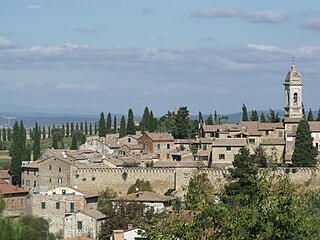
San Quirico d'Orcia is a comune (municipality) of about 2,500 inhabitants in the Province of Siena in the Italian region Tuscany, located about 80 kilometres (50 mi) southeast of Florence and about 35 kilometres (22 mi) southeast of Siena inside the Valdorcia landscape. It is named in honor of Saint Quiricus.

Villa del Priorato di Malta or Magistral Villa, located on the Aventine Hill in Rome, is one of the two institutional seats of the government of the Sovereign Order of Malta. Along with Magistral Palace, the estate is granted extraterritorial status by Italy. It also hosts the Grand Priory of Rome and the embassy of the Sovereign Order of Malta to Italy.
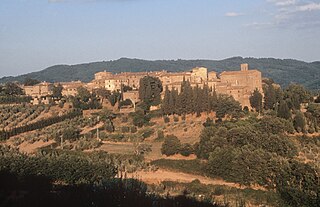
The winery that produces the wine Chianti Classico operates within the walls of the Castello di Volpaia, a fortified village of medieval origin. The first document in which the village was clearly mentioned was written at Cintoia, another small village about 12 miles south of Florence, on April 21, 1172. It notes that the brothers Franculus and Galfredus da Cintoia, after having obtained the consent of their father and of "Liquiritia, uxor Franculi", have obtained a loan of 28 silver pounds from Spinello da Montegrossoli. Their possessions, situated in the "court and castle of Vulpaio," were offered as security for repayment of the loan. The document was published by L. Pagliai in che Regesta Chartarum Italiae.
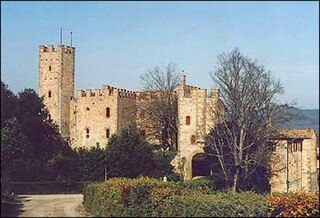
The castle of Montalto lies east of Siena, Italy, in an area known as ‘la Berardenga’, which is an extensive territory in the Chianti region of Tuscany. Its position right on the border between the territories of Siena and Florence gave it great strategic importance during the 13th, 14th and 15th centuries. Much of the castle is from medieval times and parts date back to 1000 or earlier; extensive restorations were performed in the 16th century and again in the 19th century.
Barbara Frale is an Italian paleographer at the Vatican Secret Archives. Frale has written books about the Templars and she has a special interest in the history of the Shroud of Turin. In September 2001, she found an authentic copy of the Chinon Parchment.
Castello di Monterone, known also as Castello Piceller, is a small restored 13th-century castle in Perugia, Italy. It is located in the road that connects Perugia to Assisi, through Ponte San Giovanni. Very close to the Monastery of San Pietro and to the Church of San Bevignate, this street is one of the "royal roads", that led out of the town through the main gates of Perugia, along a road network already used by the Etruscans and Romans.
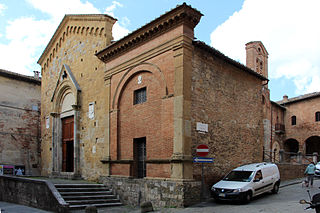
San Pietro alla Magione is an ancient church on Via Camollia in Siena, Italy.

Rocchette di Fazio is a village in Tuscany, central Italy, administratively a frazione of the comune of Semproniano, province of Grosseto. At the time of the 2001 census its population amounted to 19.

Porrona is a village in Tuscany, central Italy, administratively a frazione of the comune of Cinigiano, province of Grosseto. At the time of the 2001 census its population amounted to 24.
The Badia of Santi Salvatore e Cirino is a former Cistercian monastery located east of the village of Monteriggioni, in the province of Siena in the Italian region of Tuscany. The abbey is also known as the Badia a Isola or Abbazia dei Santi Salvatore e Cirino. The monastic buildings include an inn, restaurant and halls for cultural events.



